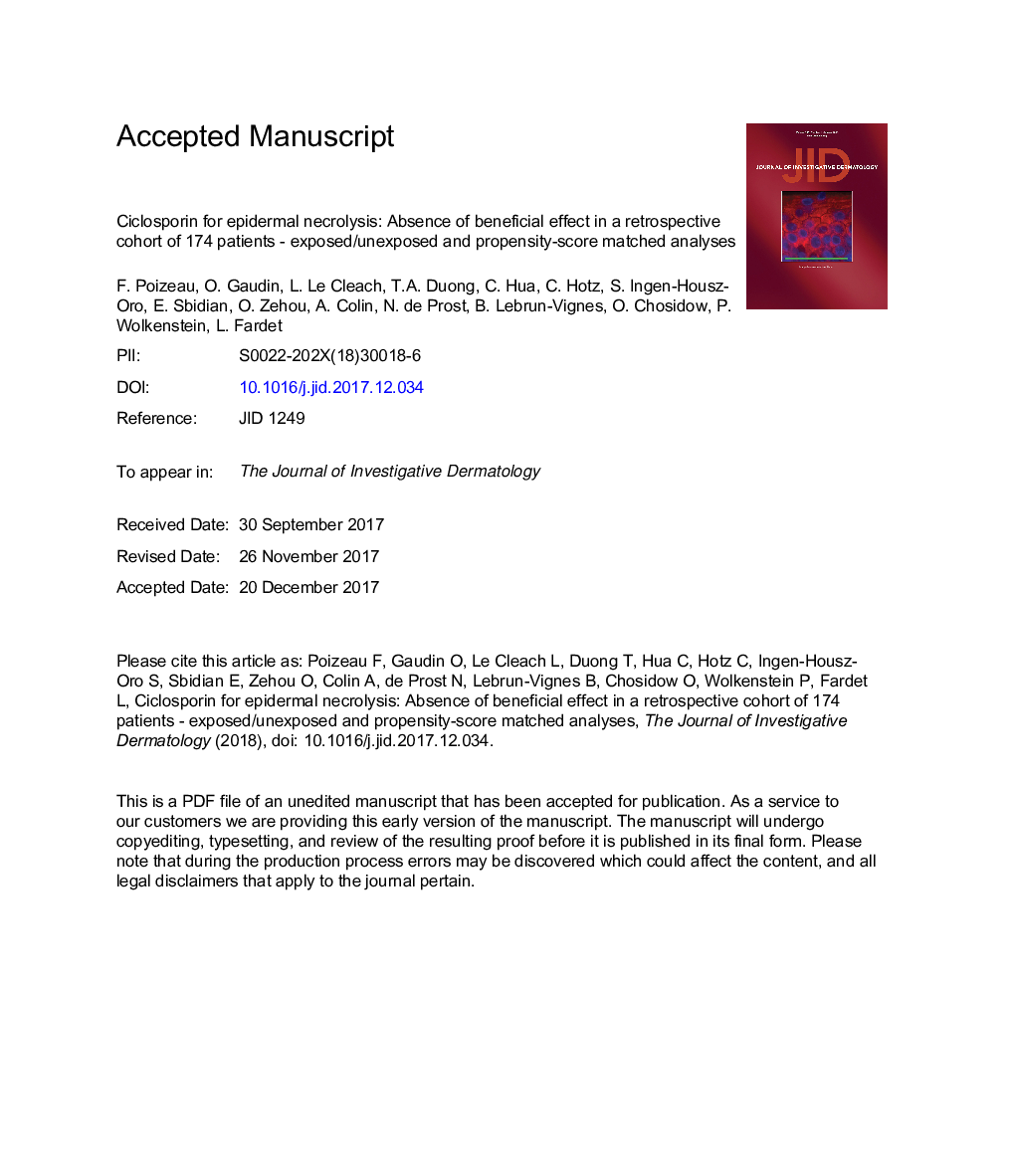| Article ID | Journal | Published Year | Pages | File Type |
|---|---|---|---|---|
| 8715884 | Journal of Investigative Dermatology | 2018 | 27 Pages |
Abstract
Cyclosporine has shown promising results for mortality in patients with Stevens-Johnson syndrome/toxic epidermal necrolysis. However, available studies included only a small number of patients and did not include a validated and homogenous control group. We present the results from a retrospective monocentric study including 174 patients with Stevens-Johnson syndrome/toxic epidermal necrolysis during 2005-2016. Among them, 95 received cyclosporine (3 mg/kg/day) plus supportive care, and 79 received supportive care only. Both a traditional exposed/unexposed method and a propensity score-matching method were used to compare the progression of skin detachment between day 0 and day 5, the proportion of patients with cutaneous re-epithelialization starting on day 5 or mucosal re-epithelialization on day 10, the duration of progression, and the number of deaths between the two groups. None of these outcomes significantly favored cyclosporine, either by the exposed/unexposed method or the propensity score method. Acute renal failure affected more patients receiving cyclosporine (PÂ = 0.05). Overall, the results of this epidemiological study did not show a beneficial effect of cyclosporine in patients with Stevens-Johnson syndrome/toxic epidermal necrolysis. They are discordant with those previously published. The large number of patients and the use of a propensity score method provide valuable insights. The main limitation of the study is the lack of randomization.
Keywords
Related Topics
Health Sciences
Medicine and Dentistry
Dermatology
Authors
Florence Poizeau, Olivier Gaudin, Laurence Le Cleach, Tu-Anh Duong, Camille Hua, Claire Hotz, Saskia Ingen-Housz-Oro, Emilie Sbidian, Ouidad Zehou, Audrey Colin, Nicolas de Prost, Bénédicte Lebrun-Vignes, Olivier Chosidow, Pierre Wolkenstein,
